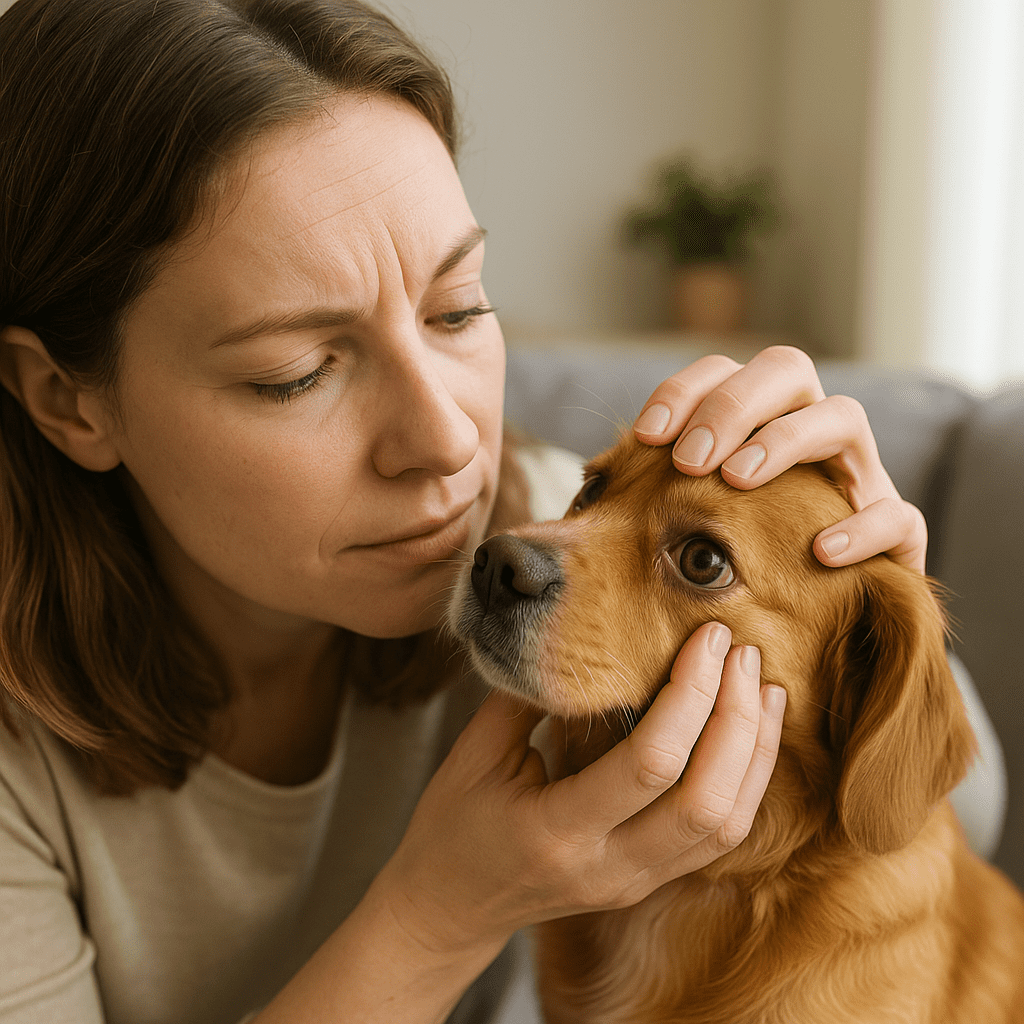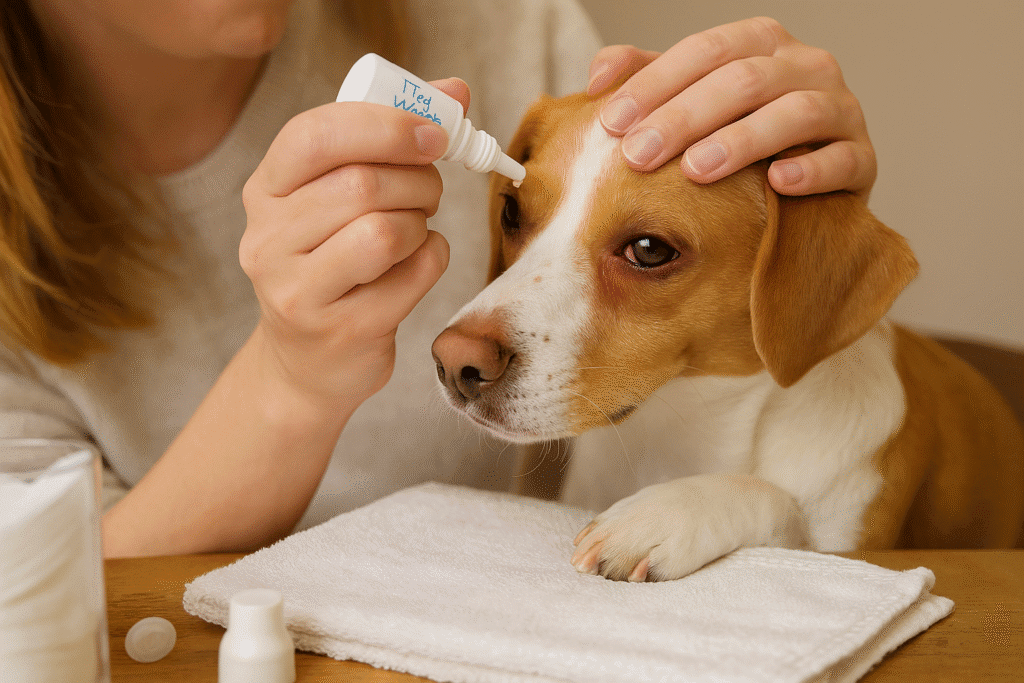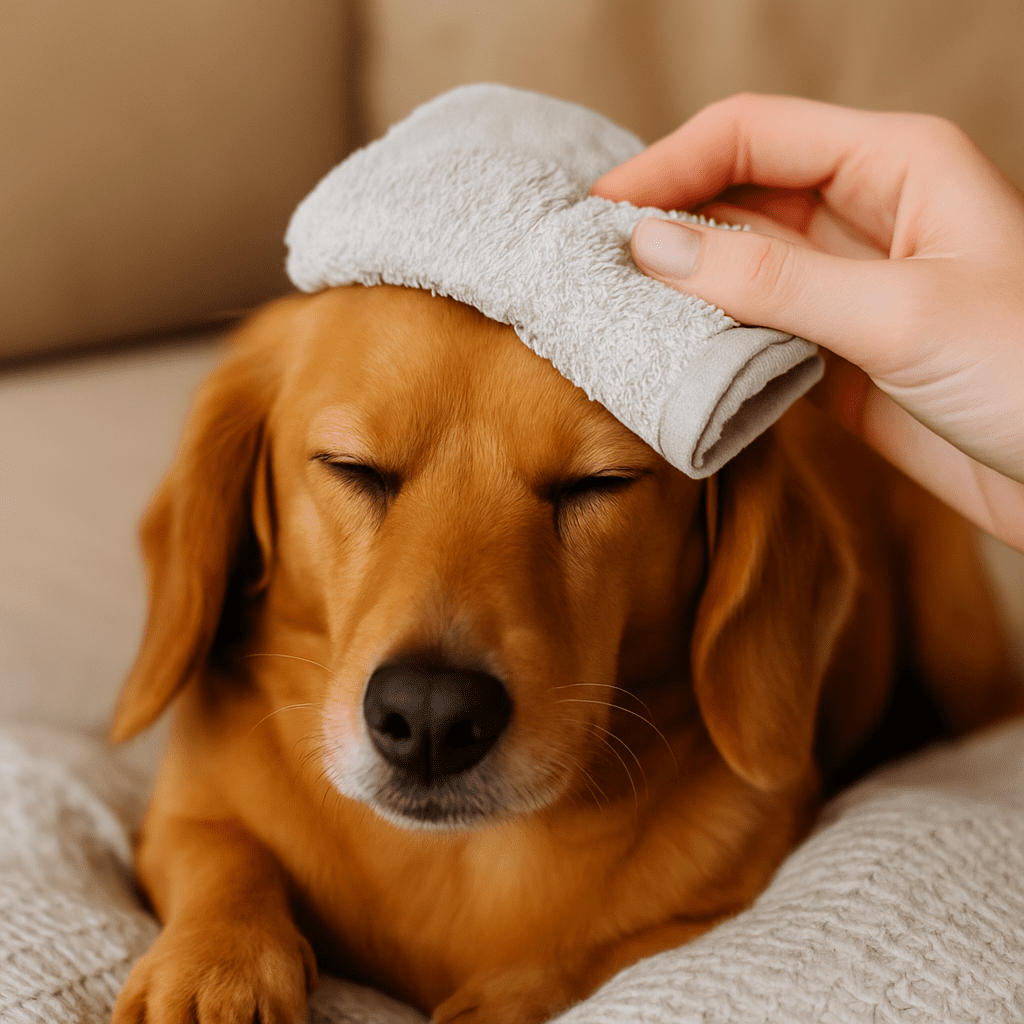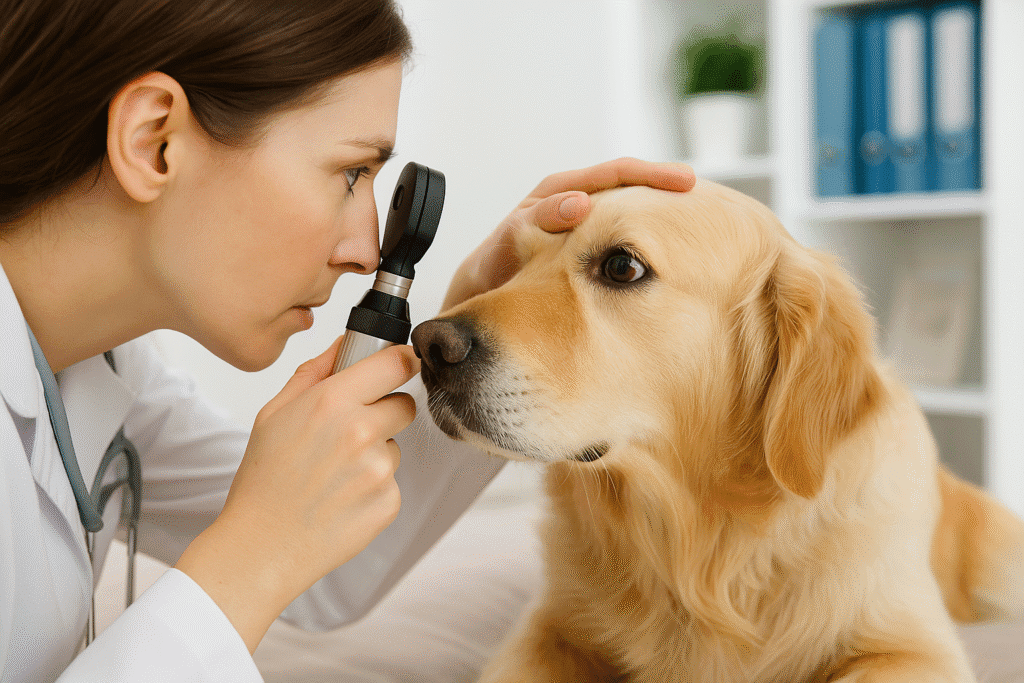Dog Eye Infections Remedies: Quick Solutions Every Owner Should Try
Redness, discharge, or squinting? These Dog Eye Infections Remedies bring quick relief while you contact your vet. Learn safe at-home steps like sterile saline rinses, cold compresses, and e-collars, plus red flags, treatment options, and prevention so your dog’s eyes stay comfortable and healthy.
If your dog suddenly develops red, watery, or goopy eyes, acting early matters. This guide explains practical Dog Eye Infections Remedies to reduce discomfort right away, what commonly causes eye problems, how to prevent them, and exactly when you must see a veterinarian to protect your dog’s vision.

Dog Eye Infections Remedies: Start With a Quick Symptom Check
Before you try any Dog Eye Infections Remedies, scan for these typical signs:
- Red or pink sclera (the whites of the eyes) and swollen eyelids
- Watery, mucoid, or yellow-green discharge
- Frequent blinking, squinting, or keeping the eye closed
- Light sensitivity and pawing at the face
Some symptoms suggest emergencies—sudden cloudiness, a visible scratch, a pink mass in the inner corner (possible cherry eye), or apparent vision loss. In those cases, skip home care and call your veterinarian immediately.
Dog Eye Infections Remedies You Can Use Right Now (Safe, At-Home)
The following Dog Eye Infections Remedies are supportive—not a replacement for veterinary diagnosis. If your dog worsens or fails to improve within 24 hours, see your vet.
1) Sterile Saline Rinse
Flush away dust, pollen, or minor debris. Use a purchased sterile eye wash labeled for ocular use (never homemade salt water if you can avoid it). Gently hold the eyelids apart and let saline flow across the eye from inner to outer corner. Repeat two to three times daily until you reach your vet.
2) Cold Compress (Over Closed Lids)
A clean, cool, damp cloth over the closed eye for 1–2 minutes helps reduce swelling and soothe irritation. Do not press on the eyeball. Reapply several times a day as your dog tolerates.
3) Unmedicated Artificial Tears
Preservative-free artificial tears lubricate and dilute irritants. Apply per label—often every 2–4 hours. Avoid human redness-relief drops or medicated products unless your veterinarian specifically approves them.
4) E-Collar (Cone)
If your dog rubs the eye, use an e-collar to prevent self-injury. Protecting the surface of the eye is one of the most effective Dog Eye Infections Remedies while you await treatment.
5) Gentle Cleaning of the Eye Area
Soften and wipe away crust with sterile eyewash and cotton pads, always moving from the inner to outer corner. Keep the hair around the eyes trimmed to prevent wicking discharge onto the skin and causing irritation.

What Causes Eye Infections in Dogs?
Understanding causes helps you pick the right Dog Eye Infections Remedies and communicate clearly with your vet:
- Conjunctivitis: Inflammation of the inner eyelids and sclera; often presents with redness and discharge.
- Dry Eye (KCS): Insufficient tear production leads to thick, sticky discharge and corneal irritation.
- Corneal Ulcers or Abrasions: Scratches that cause squinting, pain, tearing, and light sensitivity.
- Allergies & Irritants: Pollen, dust, smoke, or shampoos can inflame the eye surface.
- Eyelid or Tear Duct Issues: Entropion, ectropion, blocked ducts, or a prolapsed third eyelid gland (cherry eye).
- Foreign Bodies & Trauma: Grass awns, sand, or rough play can directly injure the eye.
When Dog Eye Infections Remedies Aren’t Enough: Red Flags
Seek veterinary care right away if you notice any of the following:
- Thick yellow-green discharge that persists more than 24 hours
- Marked swelling, severe pain, or your dog won’t open the eye
- Blue-white cloudiness or a visible scratch/defect on the cornea
- A pink or red mass in the inner corner (possible cherry eye)
- Vision changes, bumping into objects, or frantic rubbing
What Your Veterinarian May Do (Diagnosis & Treatment)
Expect a physical and ocular exam, including fluorescein staining for ulcers, tear tests for KCS, and stain/culture as needed. Treatments may include:
- Antibiotic drops or ointments for bacterial infections
- Antiviral or anti-inflammatory therapy depending on cause and corneal status
- Pain control and corneal ulcer management when injury is present
- Tear stimulants (e.g., for KCS), plus long-term lubricants
- Surgery for eyelid defects, tear duct problems, or cherry eye
Proper application matters. If you struggle to place eye drops or ointment, ask your clinic to demonstrate positioning and handling techniques so each dose reaches the eye surface (not the fur or eyelids).
Dog Eye Infections Remedies That Prevent Recurrence
Once the acute episode settles, prevention keeps your dog comfortable and reduces future vet visits.
- Grooming hygiene: Keep facial hair short around the eyes; wipe away discharge daily.
- Allergy control: Rinse after dusty hikes; discuss antihistamine or anti-itch plans with your vet if seasonal signs recur.
- Car safety: Avoid letting dogs ride with heads out of the window—high-speed air blasts irritants straight into the eye.
- Sport & adventure prep: For brushy trails or sandy beaches, carry saline and an e-collar in your go-bag.
- Routine checks: Annual wellness exams (or more often for predisposed breeds) catch subtle changes early.

Step-By-Step: How to Use At-Home Dog Eye Infections Remedies
- Wash your hands. Clean handling prevents adding bacteria to an already irritated eye.
- Position your dog safely. Small dogs do best on a stable, non-slip surface. For larger dogs, have a helper hold the head gently.
- Saline flush. Let sterile eyewash flow over the eye surface; do not touch the tip to fur or skin.
- Artificial tears. Apply drops per label. Count aloud so you don’t double dose.
- Cold compress. One to two minutes over closed lids, two to four times daily.
- E-collar. If your dog rubs the eye, put the cone on between treatments.
- Monitor. If no improvement within 24 hours—or if pain increases—contact your vet.
Dog Eye Infections Remedies for Special Situations
Allergy-Prone Dogs
Flush after outdoor exposure, keep home air filters clean, and discuss allergy control with your vet. Managing the underlying allergy often reduces recurrent eye flare-ups.
Short-Nosed (Brachycephalic) Breeds
Pugs, Bulldogs, Shih Tzus, and similar breeds have prominent eyes and shallow sockets, so minor irritants can create bigger problems. Use saline after walks, avoid harsh winds, and ask your vet about protective strategies.
Active or Working Dogs
Trail runners, beach lovers, and field dogs benefit from a small “eye kit”: sterile eyewash, artificial tears, cotton pads, and a soft e-collar in your pack.
Internal Guides to Support Eye Health
For whole-body wellness that supports ocular comfort, explore these related articles:
Trusted External Resources
- (Reference) AKC — Dog Eye Infections: Symptoms, Causes & Treatment
- (Reference) VCA — Conjunctivitis in Dogs
- (Reference) VCA — Dry Eye (KCS) in Dogs

FAQ: People Also Ask About Dog Eye Infections Remedies
Can I use human eye drops as Dog Eye Infections Remedies?
No. Many human drops contain preservatives or decongestants that can harm dogs. Use sterile eyewash, preservative-free artificial tears, and products your veterinarian recommends.
How long should I try at-home Dog Eye Infections Remedies?
Use supportive care for up to 24 hours while arranging an appointment. If symptoms persist or worsen—especially pain, thick discharge, or cloudiness—seek veterinary care immediately.
Will Dog Eye Infections Remedies cure the infection?
Home care soothes discomfort and protects the eye but does not replace diagnosis or targeted medications. Many infections require prescription antibiotic or anti-inflammatory therapy.
Are eye infections contagious to other pets?
Some causes (e.g., certain viruses) can spread. Separate pets until your vet confirms the diagnosis, and wash hands after handling the affected dog.
What’s the safest cleaning routine around the eyes?
Use sterile eyewash and soft cotton pads, wiping from the inner to outer corner. Trim facial hair and avoid harsh soaps or fragranced wipes near the eye.
Final Takeaway & CTA
The best Dog Eye Infections Remedies are simple and protective: sterile saline, artificial tears, cold compresses, and an e-collar—paired with timely veterinary care. Eyes are delicate; early action prevents complications and preserves comfort and vision.
Want more proven health tips? Explore our essential guide: Pet Vaccines: Essential Guide and support whole-body wellness with Best Dog Multivitamins.

